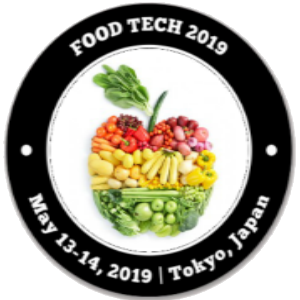
Sawitree Dueramae
Kasetsart University, Thailand
Title: Screening of halophilic glutaminase-producing halophilic and halotolerant bacteria isolated from Thai fish sauce
Biography
Biography: Sawitree Dueramae
Abstract
Extremophiles are organisms that can survive in different extreme conditions, especially halophiles. They are excellent sources of enzymes that are not only salt stable but also can resist and carry out reactions efficiently under harsh environmental conditions. Recently, microbial glutaminases have found applications in many fields. L-glutaminase is a very important enzyme due to its potential applications in food industries as flavor enhancing agent and anticancer agent in medicine. L-glutaminase catalyzes the hydrolytic degradation of L-glutamine to L-glutamic acid and ammonia. In addition, it plays an important role in the production of fermented foods by enhancing the umami and kokumi tastes. The current investigation was aimed to screen and select halophilic glutaminase producing halophilic and halotolerant bacteria from Thai fish sauce samples. A total of 59 bacterial isolates were screened and selected for halophilic glutaminase producing on modified Sehgal and Gibbons Complex (SGC)-glutamine agar containing 0-25% (w/v) NaCl and supplemented with phenol red as indicator. A positive reaction for the glutaminase test was defined as a pink zone around the colony. Our results revealed that among all, 2 isolates (2.76%) showed the highest halophilic glutaminase ability on SGC-glutamine agar containing 20% (w/v) NaCl, whereas 11 (7.59%), 14 (4.14%), 9 (4.22%), 4 (3.98%) and 2 (3.46%) isolates exhibited high halophilic glutaminase on SGC-glutamine agar containing 15, 10, 5, 20 and 25% (w/v) NaCl, respectively. The bacterial isolate FF5302 produced the highest halophilic glutaminase activity (24.25 U/mL) in the SGC liquid medium containing 1% (w/v) glutamine and 20% (w/v) NaCl on a rotary shaker at 200 rpm, at 37 ºC and 7 days of incubation. Finally, the halophilic glutaminase of isolate FF5302 is a potential candidate for flavor-enhancing enzymes in the food industries.

